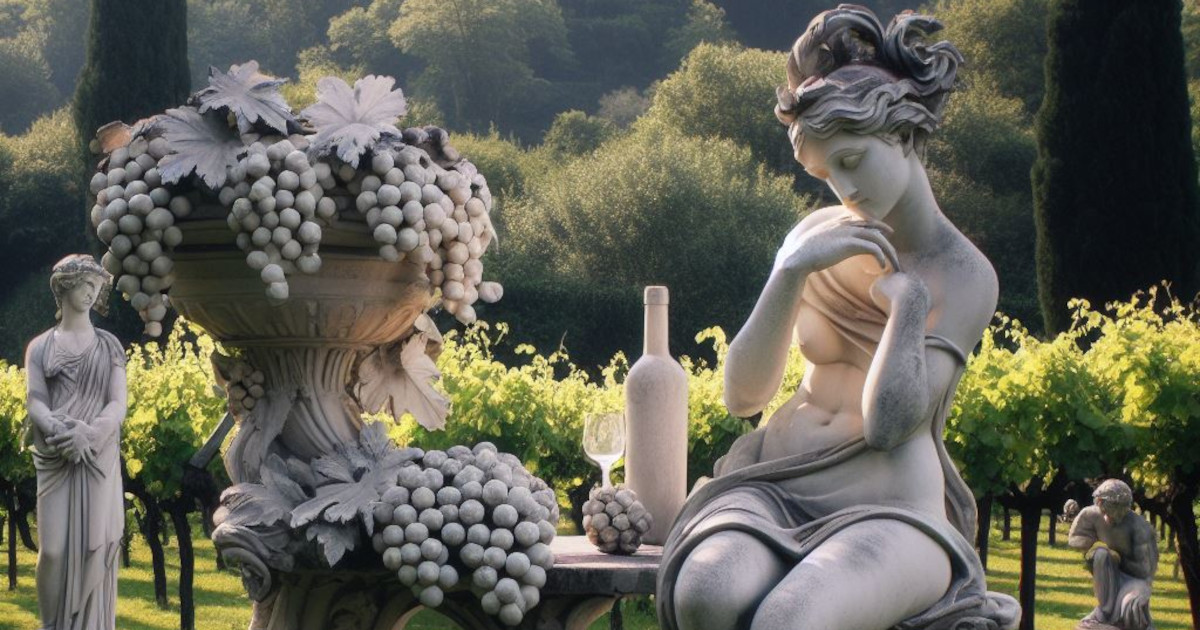
The Aesthetic Appeal of Statues in Wine Gardens
Wine gardens, born in European vineyards, have become a global sensation. These captivating spaces offer more than wine tasting; they provide an immersive experience that engages all the senses. Upon entry, a symphony of sights, sounds, and scents greets you, transporting you to an enchanting realm.
Meticulously manicured landscapes blend nature and artistry, with sprawling green vineyards stretching as far as the eye can see, their vibrant leaves gently swaying. Colorful flowers dot the scenery, adding whimsy. Amidst this beauty, statues of grape pickers pay homage to the craftsmanship in each bottle of wine.
Yet, it’s not only the visual allure that makes wine gardens special. The air is saturated with the intoxicating aroma of ripening grapes while rustling leaves and chirping birds create a soothing symphony. The sun casts a golden glow, illuminating the surrounding splendour.
Within these enchanting spaces, wine tasting becomes a sensory odyssey. The velvety texture of the wine caresses the palate, while intricate flavours dance on the taste buds. Sculptures scattered throughout the garden add intrigue and wonder. From mischievous cherubs to serene figures, each statue weaves a story, enriching the wine-tasting experience.
Whether you’re a wine enthusiast or an adventurer seeking a unique encounter, a visit to a wine garden promises beauty and sensory indulgence. Lose yourself in captivating landscapes, immerse in history and traditions, and let the magic of wine gardens unfold.
Understanding the Role of Statues in Wine Gardens
Garden art, an ancient tradition from Babylon and Rome, enhances outdoor spaces. In wine gardens, statues are captivating elements of this art. As fixtures in an evolving landscape, these statues provide continuity and accentuate the beauty and tranquility of the vineyard. They tell stories of the vineyard’s history, winemaking process, and cultural tapestry. These statues become guardians of the vineyard’s legacy, adding depth to the experiences that await those who wander through its beauty.
Different Types of Statues in Wine Gardens
Wine gardens boast an array of statues that enhance the landscape with their unique and distinctive touch. These statues, depicting both humans and animals with remarkable realism, blend art and nature harmoniously. Abstract designs also ignite the imagination, challenging our perceptions of art. Sculptures of varying sizes, discreetly nestled among vines or commanding attention, add charm and character. Traditional materials like stone and bronze exude elegance, while reclaimed wood adds a rustic charm. In summary, statues in wine gardens create a captivating visual spectacle, elevating the aesthetic and ambiance of the space.
The Religious Significance of Statues in Wine Gardens

Religious statues exude timeless beauty, gracing wine gardens with divine elegance. Among them, depictions of saints intertwined with viticulture are common. One revered saint is Saint Vincent of Saragossa, a beloved patron of wine-growers. His image embodies deep-rooted traditions and reverence for winemaking. Another esteemed figure is Saint Urban of Langres, renowned for protecting vineyards from frost. These statues not only captivate with their allure but also hold historical and symbolic significance. They remind us of age-old traditions, cultural heritage, and the spiritual dimensions of winemaking. In wine gardens, they create a connection to something greater, enriching the visitor experience.
How Statues Enhance the Aesthetic Appeal of Wine Gardens
In garden design, balance, proportion, color, and texture are crucial. Placing statues in a wine garden requires meticulous attention to these principles to create a captivating and harmonious space. Well-positioned statues add visual allure, serve as focal points, and invite visitors to pause and appreciate the surroundings. Strategically situating statues enhances their impact, creating visually mesmerizing and evocative spaces that offer an enchanting experience for all who enter.
Case Studies of Beautiful Wine Gardens with Statues
Chateau St. Jean in Sonoma County, California, and Château de Berne in Provence, France, are renowned wine gardens that showcase the aesthetic potential of statues. At Chateau St. Jean, strategically placed statues guide visitors on a delightful journey of discovery, punctuating points of interest and blending nature with artistic expression. Château de Berne boasts a magnificent abstract statue that commands attention as the stunning focal point of the garden, adding grandeur and sophistication to the serene surroundings. These wine gardens offer not only wine tasting but also an unforgettable visual journey, transforming their surroundings into living works of art.
Conclusion
Statues play a vital role in enhancing the aesthetic appeal of wine gardens. They provide focal points and add depth to the storytelling aspect of the space. Each statue infuses the garden with cultural and spiritual significance. During your visit, take a moment to appreciate the artistry and strategic use of statues. Marvel at their intricate details, craftsmanship, and the stories they convey. Let the statues transport you to different eras and spark curiosity. Uncover new layers of meaning and become enchanted by their silent tales. In the end, statues are guardians of the garden’s heritage and companions in its journey through time.
